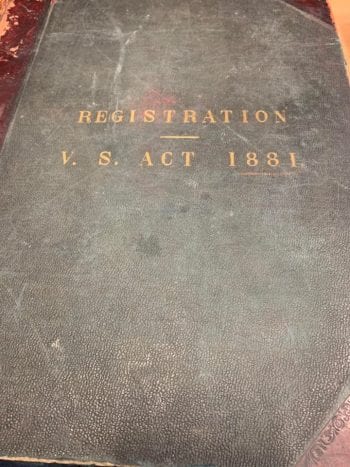4 May 2020
Six months in to her PhD studying the origins of veterinary medicine, Jane Davidson provides an update on her findings to date – including confusion over separating the work of two organisations.

“This scroll, which bears the names of the professors of the six veterinary schools of the United Kingdom, commemorates the contribution made to veterinary education over one hundred and fifty years by the Royal College of Veterinary Surgeons.”
Despite lockdown, I’m still working; student life does not stop for a mere virus. Although I can’t get to the archives, there is still a lot to read online so, for now, life carries on almost as normal.
It’s six months into my PhD, and while I will have an outlet for PhD-focused blogs on the RCVS Knowledge website, I thought a quick update here might be of interest in the current climate.
Two themes are appearing in my early reading that will seem familiar today, some 200 years later:
The letters and meeting minutes I’m reading are a wonderfully emotive collection of materials, and the passion for the profession leaps off every page – and conflict existed from the early days of vet schools and the RCVS.

It would seem some staff at the RVC wished for a corporation like the RCVS, but not one that would interfere with, or have any jurisdiction over, education – yet education is the focus of the initial charter, which resulted in some interesting letters and notes. These are similar in feel to online forums of today in tone and motive. People may claim the internet has changed the way we communicate, but we humans still create the content.
Confusion abounds in the names and roles of the two institutions that still exists for professionals and the public today. The desire for the use of “royal” and “college” as names were to add a feeling of longevity and status to both organisations.
In many meetings, the note taker refers to “the college”, and at times it is very hard to work out which college they are referring to. Because of this, many existing histories write about both together – which is of little help, and I am being careful to differentiate and assess the histories of both organisations.
In archive work it is VERY easy to get distracted from your main project. It’s the little things that catch your eye. Although I love living by the sea, I am missing London very much – so when many of the locations in my project are in London, I get a bit homesick. But I’m a bit homesick for 18th century venues and people, which feels very odd.
I was amused to read in an early veterinary journal – the original Vet Record – of a case of horns in humans. The original Vet Record was the Veterinary Medical Association’s journal, which was meant to be aimed at informing the public of the work of the RCVS.
I’m not sure how much impact it had with the public, as it contained similar content to today’s Vet Record, with clinical case discussions and articles of interest. However, as there were no pictures with the horn article I obviously had to Google it…
Note: only do that with a strong stomach!
What is of interest to us now is the same as was of interest of those who have gone before us.
Finally, I know many people will think my project would involve a history of animals, but I am going to disappoint those people. Animals are clearly part of the history, but their role is not an obvious or well-documented one for a variety of reasons – which I am trying not to get side-tracked into, so will save for another blog right now.
At a time when I see my community suffering, I am grateful to have this project to lose myself in a little and hope sharing some of my insights can help your day – check #PhDbytheSea and #VetHistory for more.